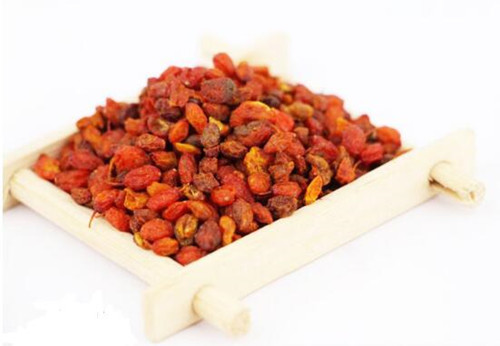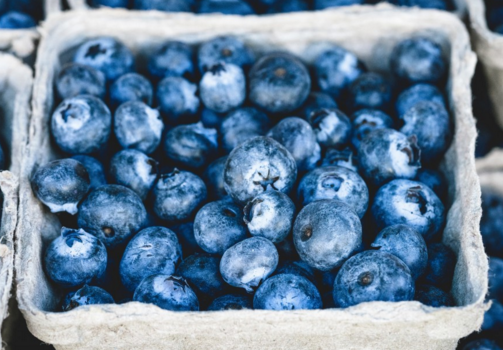What are the effects and effects of Hippophae rhamnoides in Elaeagnaceae? How can I eat it well? Can you treat skin diseases?
Hippophae rhamnoides is a plant of the genus Hippophae rhamnoides of Elaeagnaceae. The roots, stems, leaves, flowers and fruits of Hippophae rhamnoides have good medicinal value. Ancient Tibetan medicine in China regarded the fruit of Hippophae rhamnoides as a common medicine for the treatment of diseases. What are the efficacy and effects of Hippophae rhamnoides? How can I eat it well?

I. brief introduction of Hippophae rhamnoides
Hippophae rhamnoides, also known as vinegar willow, yellow acid thorn, acid thorn, etc., is a deciduous shrub with thorns of Hippophae rhamnoides, native to temperate and cold temperate regions of Asia and Europe. Seabuckthorn can prevent wind and fix sand, and its fruit can be eaten or used to make beverages. in addition, seabuckthorn fruit is also valuable in beauty and medicine. China is the country with the most seabuckthorn resources in the world, which is mainly distributed in North China, Northeast and Northwest China, especially in Shanxi Province.
As a deciduous shrub, Hippophae rhamnoides is between two and four meters high, its branches are rough, its bark is black, and its leaves are lanceolate; it blossoms three years later, dioecious, and spreads seeds through the wind; seabuckthorn has well-developed roots, its roots are symbiotic with Frank's bacteria, and a single fruit weighs between 270 and 480 milligrams and is rich in vitamins C, E, B12 and carotenoids, flavonoids and fatty acids.
Second, the efficacy and function of Hippophae rhamnoides
1. Nutritional value of Hippophae rhamnoides.
The nutritional value of Hippophae rhamnoides is very high, and its fruits, leaves and seed oil of Hippophae rhamnoides all have good medicinal and nutritional value.
Sea buckthorn fruit, sea buckthorn leaf, sea buckthorn oil ① per 100g seabuckthorn pulp contains: vitamin C:500mg-400mg vitamin E:250mg-400mg vitamin B1:0.05mg-0.3mg vitamin B2:0.03mg-0.15mg vitamin B1 20.2mg-0.88mg vitamin K compound: 20mg-350mg ② contains amino acids, fatty acids, linoleic acid, seabuckthorn flavonoids, superoxide dismutase (SOD) and other active substances ③ contains isorhamnetin, Glycosides, quercetin, kaempferol and other seven kinds of paulownia and trace elements Hippophae rhamnoides leaves contain crude protein 15.75%, crude fat 9.48%, crude fiber 14.04%, nitrogen-free extract 54.84% oil content of seabuckthorn seeds 10% 12% The oil content of the pulp is 14% Mel 18%. Seabuckthorn oil contains 206 kinds of active substances which are beneficial to the human body, as well as a lot of vitamin E, vitamin A, flavonoids and so on.
2. The efficacy and function of Hippophae rhamnoides.
(1) Hippophae rhamnoides has the effect of resolving phlegm and relieving cough: seabuckthorn is a kind of valuable traditional Chinese medicine with sour, astringent and warm nature; it belongs to spleen, stomach, lung and heart meridian, and has the effect of resolving phlegm and relieving cough, promoting blood circulation and dispersing blood stasis. Ancient Tibetan medicine and Mongolian medicine in China listed seabuckthorn as an important medicinal plant for relieving cough, relieving asthma, promoting blood circulation and dispelling blood stasis.
(2) Hippophae rhamnoides can improve cardio-cerebrovascular system: medical research shows that seabuckthorn seed oil is rich in unsaturated fatty acids and fat-soluble vitamins, which can reduce cholesterol and relieve the attack of angina pectoris. As well as prevention and treatment of coronary atherosclerosis and other aspects have a very good effect, so as to effectively improve the role of cardio-cerebrovascular.
(3) Hippophae rhamnoides has the effect of invigorating the spleen and eliminating food: Hippophae rhamnoides has the effect of invigorating the spleen and stomach meridian. Seabuckthorn seed oil contains a variety of anti-inflammatory, anti-ulcer ingredients and lipids, which has a certain auxiliary effect on gastric ulcer and duodenal ulcer, gastritis, chronic diarrhea and ulcerative colitis.
(4) Hippophae rhamnoides has the effect of delaying aging: the active components of SOD in Hippophae rhamnoides are rich, which has a strong antioxidant effect and has a certain auxiliary effect on delaying aging.
(5) Hippophae rhamnoides can accelerate wound healing: seabuckthorn seed oil can promote tissue regeneration and epithelial tissue healing, and has a good auxiliary effect on burn, scald, knife burn and frostbite.
In addition to medicinal value, Hippophae rhamnoides has high economic value. Hippophae rhamnoides has developed roots and has the characteristics of nitrogen-fixing nodules, and has the characteristics of drought tolerance, barren tolerance and saline-alkali tolerance. therefore, it has been widely planted in many areas of the country as an excellent tree species for preventing wind and fixing sand, water and soil conservation and soil improvement.
Note: although the efficacy of Hippophae rhamnoides is good, it should also be used under the guidance of doctors, and it can not directly replace drugs for treatment, but only has the effect of adjuvant treatment for some diseases.
Third, how to eat seabuckthorn?
1. Seabuckthorn fruit is eaten raw: seabuckthorn fruit is sour and sweet, and fresh seabuckthorn fruit can be eaten directly.
2. Besides eating raw, seabuckthorn fruit can also be processed into fruit juice, fruit wine, jam, preserved fruit, jelly, beverage, health products and so on.
3, seabuckthorn dried fruit, seabuckthorn leaves can be eaten directly, can also make tea to drink, but also can cook porridge, stew and so on.
4. Hippophae rhamnoides seed oil is a yellow to orange-red transparent liquid, which is a kind of vegetable oil and can be eaten directly. It is usually made into capsule products or used for skin care. Generally, the choice to protect the liver and protect the liver is to eat seabuckthorn seed oil; the choice to nourish the stomach and protect the stomach is seabuckthorn fruit oil, which is more vitamin E and carotene than seed oil, and the color is brown and red.
Fourth, who is suitable for seabuckthorn to eat?
Seabuckthorn is suitable for middle-aged and elderly people, patients with hypertension, people with cardiovascular and cerebrovascular diseases, and women who love beauty. Although Hippophae rhamnoides has medicinal value, it should also be taken under the guidance of a doctor to see if it is suitable, must not directly replace drug treatment, do a good job of safe use of drugs.
Can seabuckthorn treat skin diseases? Is it true or false to drain dampness and cold?
As to whether Hippophae rhamnoides can treat skin diseases and remove dampness and cold, according to the editor, there is no experimental proof that it can be treated, which may have some auxiliary effect, but if you want to treat it, you still need to use it under the guidance of a doctor.
Time: 2019-04-06 Click:
- Prev

"Green Purifier" what if the green apple leaves turn yellow? How to raise more exuberant? Can formaldehyde be removed?
Green pineapple is a plant of the unicorn leaf genus, which lives when it comes to water. Because of its indomitable vitality, it is called the flower of life; it can be potted or can be hydroponically cultivated with several stems; it has a very strong function of air purification, so it has the good name of green purifier and is often used to decorate the house. So, what if the green pineapple leaves turn yellow? How to raise it more vigorously?
- Next

What are the precautions for blueberry planting? How to increase output?
Blueberry is a kind of shrub fruit, which has high nutritional value, pure taste and great market demand, so what are the precautions for blueberry planting? How to increase blueberry production? Matters needing attention in blueberry planting: 1. Blueberry planting in the garden should choose the middle and lower parts of the east and south slopes, with a slope of less than 30.
Related
- Fuxing push coffee new agricultural production and marketing class: lack of small-scale processing plants
- Jujube rice field leisure farm deep ploughing Yilan for five years to create a space for organic food and play
- Nongyu Farm-A trial of organic papaya for brave women with advanced technology
- Four points for attention in the prevention and control of diseases and insect pests of edible fungi
- How to add nutrient solution to Edible Fungi
- Is there any good way to control edible fungus mites?
- Open Inoculation Technology of Edible Fungi
- Is there any clever way to use fertilizer for edible fungus in winter?
- What agents are used to kill the pathogens of edible fungi in the mushroom shed?
- Rapid drying of Edible Fungi

